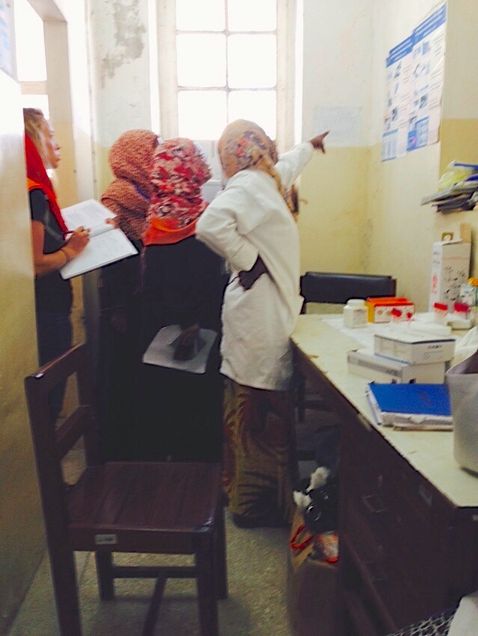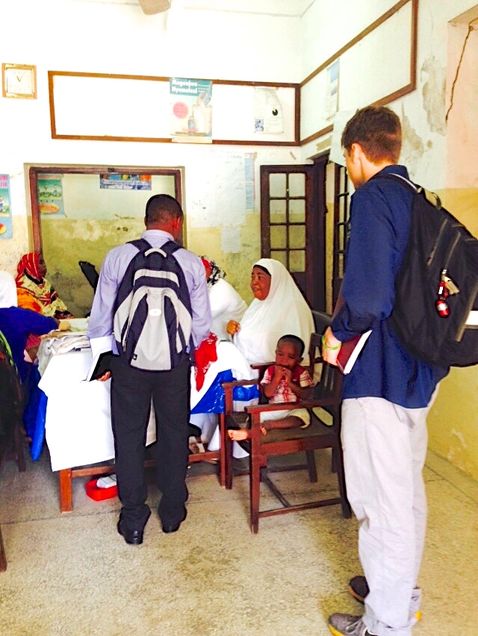Hospital and WHO visits

(From left to right) Sumayya, Safia, Jared, Maya, Sara (Photo taken by Asaa)
The last few days we have been working with the SUZA team to refine the long list of questions that resulted from previous brainstorming sessions. Today was an exciting day because we finally received permission from the Minister of Health to begin interviews in the hospital. This morning we worked in teams of two and began speaking with doctors, nurses, lab technicians, and mothers at the antenatal clinic in Mnazi Mmoja Hospital in Stone Town.
It was encouraging to hear mothers tell us they regularly attend antenatal visits and have no trouble accessing care, however we are interested to see how responses change as we venture into more rural areas. According to the health workers, transportation is still the major barrier to maternal care, and we expect answers to differ as we speak to women living farther away from Stone Town where there are higher rates of home births. According to nurses, the women who are giving birth at home may do so because they feel more comfortable with female traditional birth attendants than with doctors who are typically male.

Lab technicians explaining Rapid HIV testing to Sara, Safia, Sumayya, and Maya
Based on our initial conversations, anemia and pre-eclampsia are the biggest issues faced by mothers, however it is important to note the staff we spoke with only attend women in the antenatal clinic so do not deal with issues such as PPH. Lack of education and health education are the biggest risk to mothers, and one mother only came to deliver at the hospital because she heard on the TV/radio that she should. Nearly all of the 30 mothers we spoke with believed delivering in the hospital was a safer option than home delivery, even a mother who said the doctors were not around much and had already delivered her baby by the time a doctor came to check on her.High cost testing is an additional barrier for many women. Ultrasounds that can show obstructed labor (about 1/3 of the interviewed women had had C-Sections) and drugs for anemia are also not usually performed/adopted due to high cost.
High cost testing is an additional barrier for many women. Ultrasounds that can show obstructed labor (about 1/3 of the interviewed women had had C-Sections) and drugs for anemia are also not usually performed/adopted due to high cost.
We ended our day with a visit to the World Health Organization offices in Zanzibar. We met with Dr. Ghirmay Redae Andemichael, who stressed educating mothers on the importance of delivering in facilities, and preparing facilities to receive mothers by improving the skills of workers, the availability of supplies, and the overall quality of care. He also talked about the decentralization of care. Mnazi Mmoja is supposed to be a tertiary care center for complicated cases. Because people know it has a higher quality of care, it handles 30% of all deliveries regardless of whether or not there are complications. This contributes to the overcrowding of the maternity ward. Dr. Andemichael would like to see high quality obstetric centers that can alleviate some of the burden from Mnazi Mmoja, as well as the redistribution of health workers from less busy regions.





